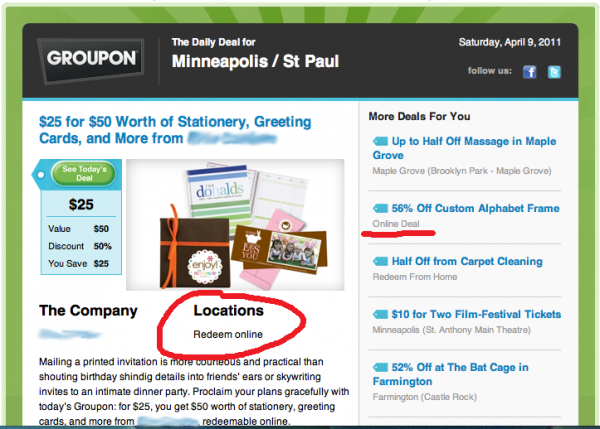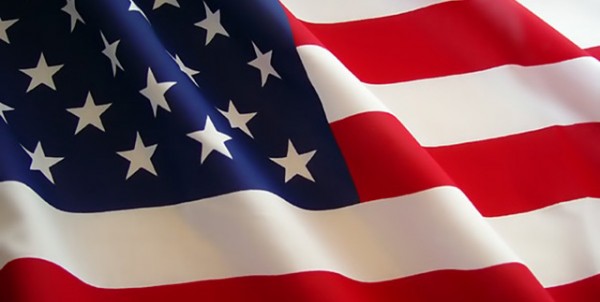 And NOW, kind souls, we change the game.
And NOW, kind souls, we change the game.
How many groups and communities out there are publishing lists of independent brick and mortar merchants? (Answer: Not enough) How many consumers actually carry that list around? (Answer: Even fewer)
How do we fix this?
Answer: We give them the list on their smart phones.
Welcome to LookLocal, The 3/50 Project’s brand-spankin’-new iPhone app, connecting consumers to locally owned, independent brick and mortar merchants with a tap or two of a finger. [click here to continue…]
 It’s not often (read: extremely rare) I mention politics on the blog—and (to date) never, ever on The 3/50 Project’s Facebook page. But today might be different.
It’s not often (read: extremely rare) I mention politics on the blog—and (to date) never, ever on The 3/50 Project’s Facebook page. But today might be different.
I received a forwarded email from my father imploring its readers to support a mythical Congressional Reform Act of 2011 (something of note since Dad’s not a fan of forwards). This is the fourth? fifth? sixth? time I’ve received this particular missive from someone, reflecting just how frustrated we all are with Congress.
Which got me thinking: Wouldn’t it be something if the guys on the Hill had to operate by the same standards as independent brick and mortars on Main Street? [click here to continue…]
 An email arrived today that began with a website link and a simple sentence: “What planet does this guy live on???”
An email arrived today that began with a website link and a simple sentence: “What planet does this guy live on???”
I clicked the link…and found that “a certain retail consultant” is recycling his old material, telling merchants to delay participation in consumer awareness campaigns (again singling out only The 3/50 Project by name).
Yeah. Right. Limit your store’s visibility during these days of stiff internet and big box competition. Not exactly the advice I’d give. (Ever.)
In keeping with the recycling theme, here’s my original response.
(Is it just me, or do you also get the impression someone has a sour grape caught between his teeth? Sorry, but it’s sure beginning to look that way.)
For the past couple of years, I’ve heard Groupon extol the virtues of their daily deals email system, repeatedly waving the “we’re all about locally owned brick and mortars” flag. Well folks, my blood’s boiling right now–that flag needs to be planted on someone else’s planet.
From Saturday’s Groupon email for the Minneapolis-St. Paul market (click the image to see full scale):

Strike one: Redeem online? What happened to Groupon’s claim they’re all about driving traffic through local doorways?
Strike two: The merchant is located in El Segundo, California–half way across the country from Minneapolis-St. Paul.
Strike three and call-your-agent-you’re-finished: The presumed storefront retailer actually isn’t. The street address given on her website points to a printing company, showing her as an “affiliate.” The phone number on her website is located in Redondo Beach, five miles from where the printer is—and not associated with any physical storefront I’ve been able to find after exhaustive online searching.
Translated? I’ll bet my bottom dollar this California e-tailer is a home-based business. Not exactly the local brick and mortar flag Groupon likes to wave.
Making matters worse, check out the side bar offer for the custom alphabet frame. Yup. You guessed it. That one’s located in Tennessee.
Groupon didn’t just drop the flag. They tore the thing to shreds, then buried it in the back yard.
As for where that back yard’s located, well…. The definition of “local” is apparently up for negotiation.
 According to a report on CNN, banks are considering limiting the amount of debit card transactions to a paltry $50 or $100? Well folks, if you want to ruin independent brick and mortars, that’s an effective way to do it. [click here to continue…]
According to a report on CNN, banks are considering limiting the amount of debit card transactions to a paltry $50 or $100? Well folks, if you want to ruin independent brick and mortars, that’s an effective way to do it. [click here to continue…]
 When “buy local”/”shop local” messaging hit its stride two years ago, big boxes and national chains quickly realized their corner on marketplace visibility was being eclipsed. Cost-conscious consumers were not only thinking about the price of an item, but the impact of where they purchased it. Before long, we saw mega-retailers repackaging the “buy local” message to include themselves—they’d procure broccoli from a nearby grower, then advertise themselves as part of the “local” movement. Carry meat packaged by a company located in a nearby town, then tell consumers they were buying “local.”
When “buy local”/”shop local” messaging hit its stride two years ago, big boxes and national chains quickly realized their corner on marketplace visibility was being eclipsed. Cost-conscious consumers were not only thinking about the price of an item, but the impact of where they purchased it. Before long, we saw mega-retailers repackaging the “buy local” message to include themselves—they’d procure broccoli from a nearby grower, then advertise themselves as part of the “local” movement. Carry meat packaged by a company located in a nearby town, then tell consumers they were buying “local.”
Uh yeah…not so much.
Well, Chapter Two of The Repackaging of Buy Local has begun to roll out, and it’s even more troubling. [click here to continue…]
 One of the bonuses to attending the A.I.R. (Advocates for Independent Retail) Summit is that we were among the first to see Civic Economics’ latest study, the Indie City Index. Based on their always-thorough methodology, CE was able to rank the top 363 metropolitan regions (not cities, since many MSAs are in extremely rural areas) according to how “independent brick and mortar healthy” they are. The more active and supported local independent businesses are in an area, the higher the score; the less active and supported, the lower the score. Here’s how the overall list shook out: [click here to continue…]
One of the bonuses to attending the A.I.R. (Advocates for Independent Retail) Summit is that we were among the first to see Civic Economics’ latest study, the Indie City Index. Based on their always-thorough methodology, CE was able to rank the top 363 metropolitan regions (not cities, since many MSAs are in extremely rural areas) according to how “independent brick and mortar healthy” they are. The more active and supported local independent businesses are in an area, the higher the score; the less active and supported, the lower the score. Here’s how the overall list shook out: [click here to continue…]
![]() And NOW, kind souls, we change the game.
And NOW, kind souls, we change the game.



 According to
According to  When “buy local”/”shop local” messaging hit its stride two years ago, big boxes and national chains quickly realized their corner on marketplace visibility was being eclipsed. Cost-conscious consumers were not only thinking about the price of an item, but the impact of where they purchased it. Before long, we saw mega-retailers repackaging the “buy local” message to include themselves—they’d procure broccoli from a nearby grower, then advertise themselves as part of the “local” movement. Carry meat packaged by a company located in a nearby town, then tell consumers they were buying “local.”
When “buy local”/”shop local” messaging hit its stride two years ago, big boxes and national chains quickly realized their corner on marketplace visibility was being eclipsed. Cost-conscious consumers were not only thinking about the price of an item, but the impact of where they purchased it. Before long, we saw mega-retailers repackaging the “buy local” message to include themselves—they’d procure broccoli from a nearby grower, then advertise themselves as part of the “local” movement. Carry meat packaged by a company located in a nearby town, then tell consumers they were buying “local.” One of the bonuses to attending the
One of the bonuses to attending the 
